Buying Guide for the Best Treadmills
Choosing the right treadmill is all about understanding your personal fitness goals, available space, and how often you plan to use it. Different treadmills are tailored for walkers, joggers, or runners, and each comes with features that suit different needs and levels of experience. Before buying, think about where you’ll put it, who will use it, and what types of workouts you want to do. This will help you focus on the specifications that matter most for you and ensure that your treadmill becomes an enjoyable and motivating part of your fitness routine.Motor PowerMotor power in a treadmill is usually measured in horsepower (HP) or continuous horsepower (CHP), and it reflects how strong the motor is, which directly influences how smooth and powerful your workouts will feel. If you're mostly walking, a lower-powered motor (around 1.5 to 2.0 CHP) can be enough, while jogging comfortably needs about 2.0 to 2.5 CHP. For frequent running or high-intensity workouts, look for motors above 2.5 CHP. Choosing the right motor power depends on your main activity—lighter use can get away with less, but if you want durability and high performance, especially for running, pick a higher-powered motor.
Running Surface SizeThe running surface, or deck size, is the area you’ll actually be walking or running on, and it's measured in length and width. A narrow and short deck (around 16" x 50") is generally fine for walking, but if you’re taller or if you'll be running, you might need something longer and wider (up to 20" x 60") to give you enough space for a comfortable stride. To find the right size, consider your height and your stride length—runners and taller people need more space, while walkers and shorter users can use smaller decks.
Shock AbsorptionShock absorption refers to the technology built into a treadmill deck to soften impact on your joints. Strong shock absorption is helpful if you have existing joint issues or plan to use the treadmill frequently, as it reduces the strain on knees and ankles. Treadmills range from very firm (mimicking outdoor running) to highly cushioned. Consider the condition of your joints and your exercise intensity—if you want more comfort or injury prevention, look for treadmills with adjustable or extra cushioning.
Incline OptionsMany treadmills can tilt the running deck upwards, which is called the incline feature. This lets you walk or run uphill, making workouts more intense and targeting different muscle groups. Treadmills usually offer inclines from 0% up to 15%. For gentle workouts, a low incline range is fine, but for challenging routines or simulating outdoor terrain, a higher incline is beneficial. Pick based on how much variety and challenge you want in your workouts—the steeper the incline, the tougher the workout.
Console and ProgramsThe console is the control panel where you set speed, time, and programs, and it often displays stats like distance and calories. Some treadmills offer simple basic readouts while others have touchscreens, Bluetooth, and pre-set workout programs for weight loss, intervals, or heart rate training. If you like guided workouts, digital tracking, or entertainment while exercising, go for a more advanced console. For straightforward workouts, a simpler display is sufficient.
Foldability and PortabilityFoldable treadmills let you lift and store the running deck vertically to save space, which is great for smaller homes or multipurpose rooms. Some also come with wheels for easier movement. If you need to store the treadmill between uses or clear space regularly, look for sturdy folding mechanisms and easy-lock features. Non-folding treadmills are generally more stable but need permanent space, so assess your space constraints.
Weight CapacityEvery treadmill has a maximum weight limit, usually between 200 and 400 lbs. It's important to pick a treadmill with a weight capacity that’s higher than your own to ensure safety, durability, and smoother operation. Estimate your weight and choose a treadmill that can comfortably support you, especially if it will also be used by other family members.
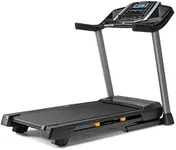


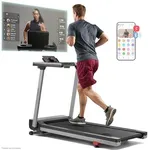
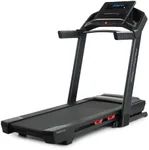
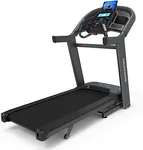


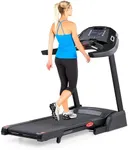



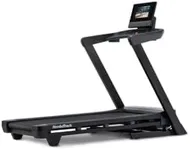

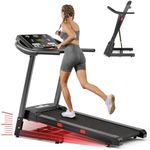
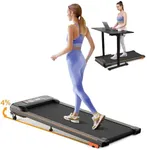
![SPORTY&FIT 4.0HP Folding Treadmill, [0.6-8.7 MPH] [Max 400LBS] [No Assembly] Electric Treadmill for Running Walking, Foldable Treadmill with LCD Monitor & Pulse Detection for Office Home Workout](https://images-proxy.bestreviews.guide/YVs3YXNXEXYubZ3g2XyajTCyuCo=/0x150/https://m.media-amazon.com/images/I/41vPxgvsvLL._AC_CX679_.jpg)





